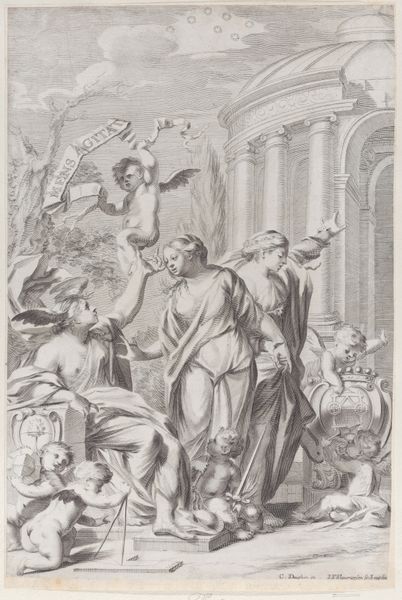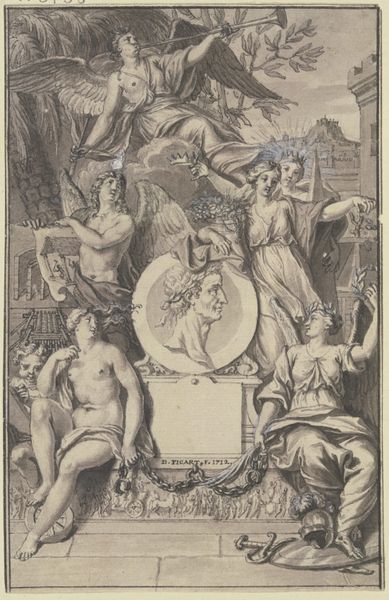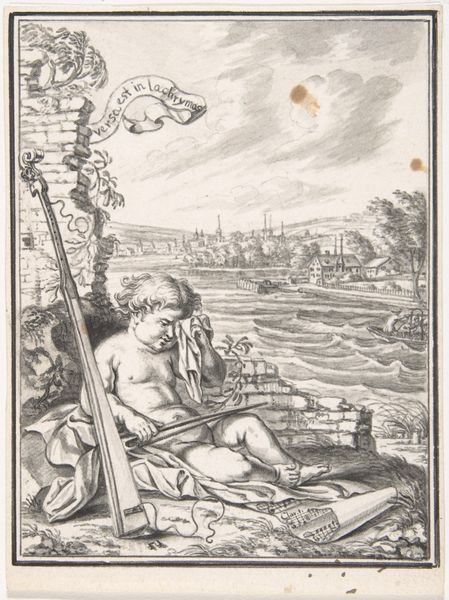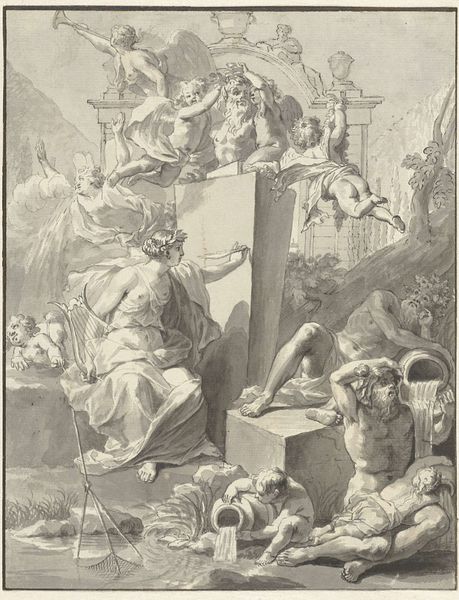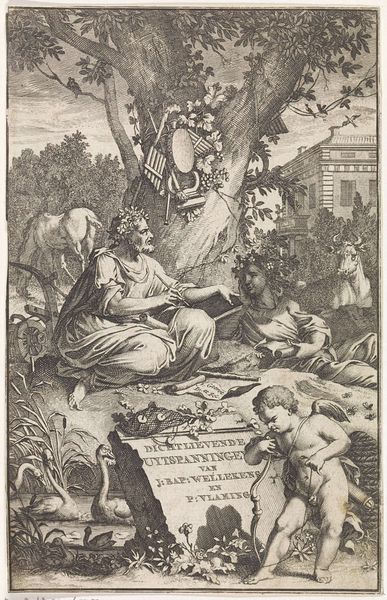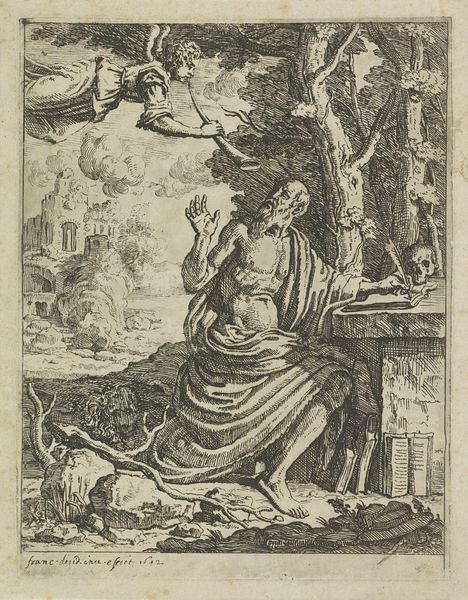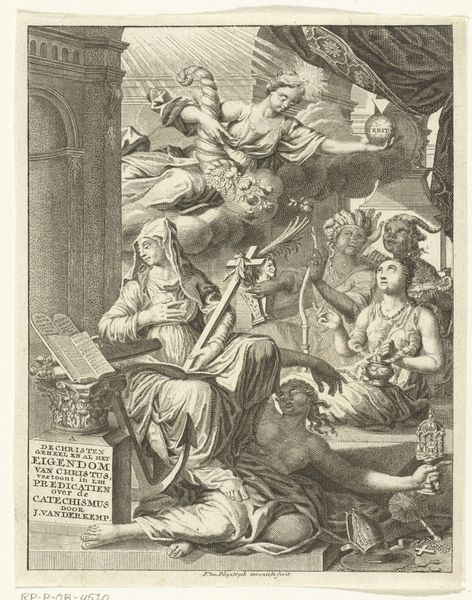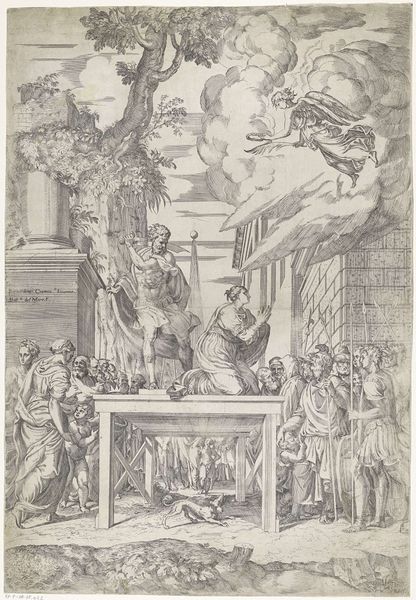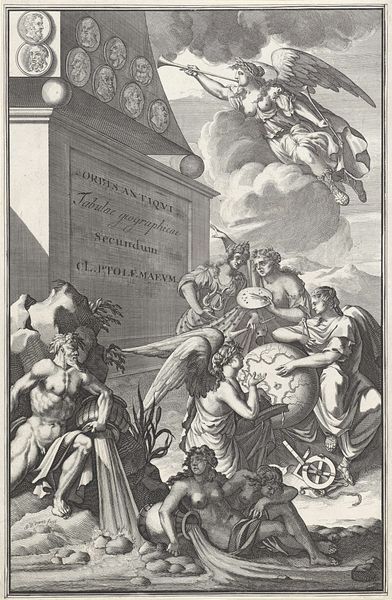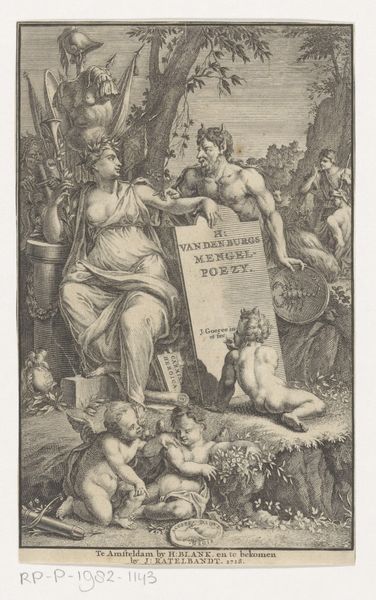
Study for the Title Page to the Thesavrvs Antiqvitatvm Romanarvm, 1696 1690 - 1704
0:00
0:00
drawing, print, ink, engraving
#
drawing
#
ink drawing
#
allegory
# print
#
landscape
#
ink
#
history-painting
#
engraving
Dimensions: 13 5/16 x 8 1/8 in. (33.8 x 20.6 cm)
Copyright: Public Domain
Editor: So, here we have Jan Goeree's "Study for the Title Page to the Thesavrvs Antiqvitatvm Romanarvm, 1696," made between 1690 and 1704. It's an ink drawing, and the grayscale gives it such a strong, somber mood. How do you interpret this work? Curator: It is a potent commentary on the passage of time and the fate of civilizations. The figure of Time looms large, juxtaposed against classical imagery and crumbling ruins. The very act of creating a "thesaurus" – a treasury – of Roman antiquities implies an effort to preserve and understand a fading past. This was during the Enlightenment when a growing intellectual movement was taking place where people began to think about secular subjects like humanity. What is history? Why do we create empires? Is there intrinsic human value or should there be an establishment for such value? What do you notice about the female figures, especially in their interaction with books and knowledge? Editor: They seem to represent wisdom or history... something to be actively studied and interpreted? Curator: Exactly. But who has access to that wisdom? How is knowledge constructed and disseminated? Consider the power dynamics at play in preserving certain histories while others are erased. This wasn’t just about remembering Rome, but about shaping contemporary identity and authority. Why do we decide to study history? Editor: That’s fascinating. It’s more than just a historical record; it’s about who gets to write that record and why. Curator: Precisely! And how that impacts our present. Editor: It's amazing to see how even a title page design can hold such layers of meaning about power, knowledge, and historical narrative. Curator: Absolutely, digging into context opens up entirely new ways of reading art!
Comments
No comments
Be the first to comment and join the conversation on the ultimate creative platform.

